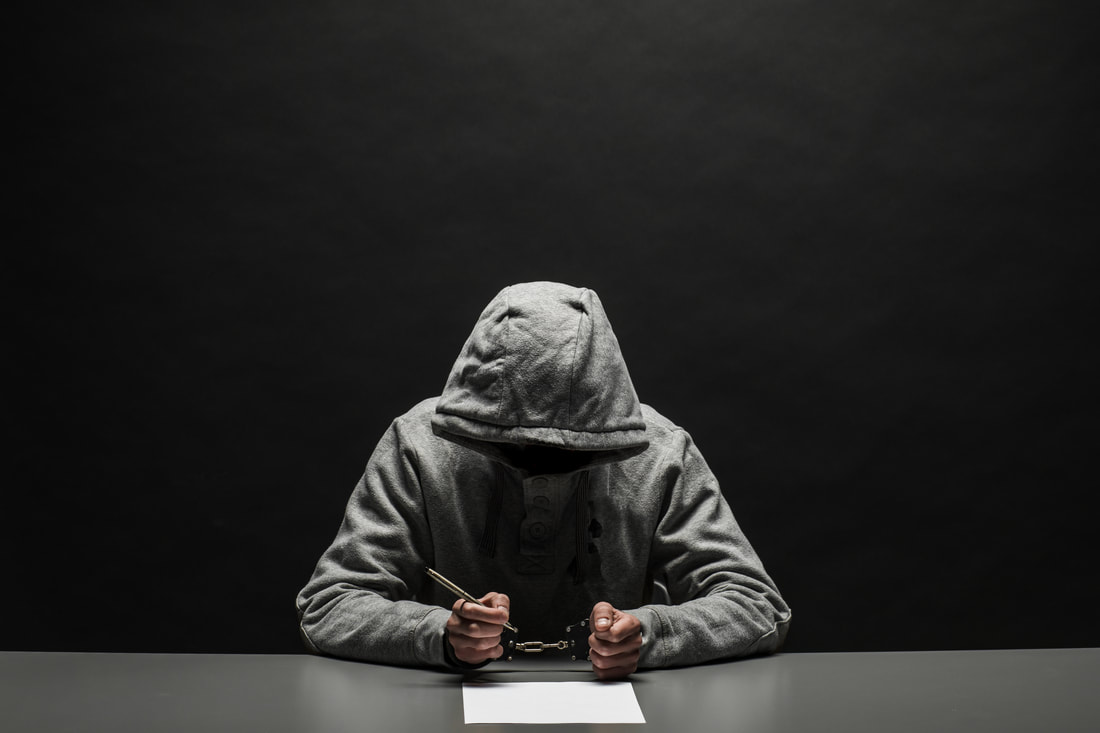|
Getting information on what goes on inside of Connecticut's prisons is not easy. It often comes from families of those in prison calling reporters or the inmates themselves writing letters.
NBC Connecticut's Mike Hydeck talks to Kelan Lyons, a justice reporter from the CT Mirror who has been covering the state's prisons extensively. He is discussing a recent public hearing where letters from inmates were read out loud. Mike Hydeck: "So recently, inmates presented their stories to the Judiciary Committee regarding solitary confinement, many with claims of abuse. When you were to see and hear these stories, how do you think lawmakers reacted to that?" Kelan Lyons: "Well, the incarcerated submitted written testimony. So it wasn't as though they were they were testifying via video, but I certainly think it has an impact in advancing the dialogue on the subject. I mean, this is a group of people who rarely are able to have their voices directly heard by those in power. And so it really speaks to how they wanted to be taken seriously by submitting so many letters. I think they did last year, they did something similar where they, I think it was about nine people who submitted written testimony from prisons or jails. And this year was 27. So it appears there was at least a little bit more of an effort to submit more letters this year, and to make sure that those voices were heard." Mike Hydeck: "And I read some of the letters printed in the [CT] Mirror and they were gripping to say the least. So a bill, as you know, limiting the use of solitary confinement actually made it through the legislature last year, but the governor vetoed it. Do you think this most recent bill has a better chance in your estimation?" Kelan Lyons: "I do. I do. The governor vetoed the last bill. It was sort of a soft veto of sorts in that he agreed, he said he agreed with the principles of the bill, but he didn't think it was good for public safety. So by vetoing that bill, he issued an executive order in its place, and that executive order made an attempt to cut back on the use of solitary confinement in the state's prisons and jails. This year, the Department of Correction or Commissioner Angel Quiros has reached an agreement with Stop Solitary Connecticut, a major advocacy group that's been pushing for this for years, to limit the use of solitary confinement. And with that agreement, the administration, the Lamont administration has told me that they are supportive of the work that the commissioner is doing, and that they could support a bill if it makes it through the legislature without serious significant changes depending on how the bill changes as it moves through." Mike Hydeck: "Earlier in the show, we interviewed a woman from Stop Solitary CT. She was concerned about oversight. She said that's very necessary moving forward. Is oversight written into this legislation?" Kelan Lyons: "It is and that's one of the biggest pieces of the legislation. And it appears to me to be one of the bigger pieces of concessions that were made in an agreement to get this bill across the finish line. I have not seen the substitute language for the bill that got out of committee. But I have heard that it is essentially codifying many of the elements of the governor's executive order while also including some opportunities for oversight. There's an Office of Ombudsman that would that would be opened, system support staff for that external watchdog. And there would also be a civilian oversight board, which is sort of like a like a consulting of sorts for the ombuds that they can hear from concerned members of the community as they're doing their work."
0 Comments
As part of a wider effort led by the White House to advance racial equity, U.S. Department of Housing and Urban Development (HUD) Secretary Marcia Fudge has instructed the department to review programs and policies that may “pose barriers to housing for persons with criminal histories or their families” in order to make it easier for them to find a home, reports USA Today.
Staffers at HUD have six months to propose updates and amendments consistent with the directive to install policies that are as inclusive as possible, especially for people of color who have been historically overrepresented in the criminal justice system. Changes would impact some of the agency’s most widespread programs, including federally funded public housing authorities and rental assistance voucher programs known as “Section 8.” People with criminal records aren’t a protected class under the Fair Housing Act of 1968, which made it illegal to discriminate against people from renting or buying a home, securing a mortgage or seeking housing assistance on the basis of race, color, national origin, religion, sex, disability and familial status. As a result, women, children, grandparents and siblings can be denied housing by private landlords if they live with a relative who has a criminal record. Fudge said criminal records should be considered to the extent that applicants pose a current risk to people or property and these risks need to be weighed against other factors. Nineteen states and the federal government have still not decriminalized simple possession of marijuana, and the legacy policies continue to have ramifications for millions of Americans, according to a new report released Tuesday by legalization advocacy group Marijuana Policy Project. Despite cannabis being legal for medical use in the majority of states and legal for adult use in 18 states, there are still multiple jurisdictions where people can face arrest and detention for being caught with even small amounts of cannabis, according to the report, titled "Behind the Times." "It is absolutely amazing that in 2022 we have a multibillion-dollar industry and an entire ecosystem around it, and at the same time we're still arresting almost 600,000 people a year for simple possession," Toi Hutchinson, president and CEO of the organization, said in a statement. The Marijuana Policy Project defines a decriminalization law as one that imposes a civil penalty, such as a fine, rather than jail time for simple possession of small amounts of cannabis. For nearly a decade, federal law enforcers have been barred from bringing cases against patients and suppliers in compliance with state medical marijuana laws, thanks to riders that Congress has added to U.S. Department of Justice appropriations bills. But the report found that federal prohibition can still cause collateral consequences for individuals, hindering employment opportunities, housing, immigration status and the right to bear firearms. The report draws on data gathered from the Federal Bureau of Investigation's Uniform Crime Reporting Program, but notes that several agencies do not report their data to the federal agency and that local jurisdictions are likely to undercount the number of people arrested or jailed for cannabis possession. Even some states with a medical marijuana program have not decriminalized, under the policy group's definition, since a person can be detained and arrested for possessing cannabis without a registered patient card, as in Florida, Oklahoma and Alabama, the report said. The report's release was timed to coincide with the 50-year anniversary of the National Commission on Marihuana and Drug Abuse report, also known as the Shafer Commission report, titled "Marihuana: A Signal of Misunderstanding." It was released on this date in 1972 and urged Congress to change the laws so personal use and possession of marijuana would not be a criminal offense. "Quite simply, we have no idea how many individuals are incarcerated for simple cannabis possession. But even a day or two in jail can cause a person to lose their job and lead to a spiral of life-altering, devastating consequences," the 2022 report said. The states identified as not having decriminalized simple marijuana possession are Alabama, Arkansas, Florida, Georgia, Idaho, Indiana, Iowa, Kansas, Kentucky, Oklahoma, Pennsylvania, South Carolina, South Dakota, Tennessee, Texas, Utah, West Virginia, Wisconsin and Wyoming As Yalda Royan and her two teenage daughters waited for two long days in front of Kabul Airport trying to escape Afghanistan last summer, she could hear rifle shots being fired in the air. A thick, unruly crowd had surged around them, of people also looking for a way out of the country.
The Taliban had taken over the city with shocking speed, and thousands of Afghans, who had enjoyed nearly two decades of relative tranquility, were suddenly running for the exit. Royan, a women's rights activist who worked for U.S.-sponsored programs, had an opportunity many other fellow Afghans lacked. "I was on one of the lists to be evacuated," she told Law360. But she also had something many others didn't: a lawyer. Just days after Royan was able to flee Afghanistan on a Canadian plane on Aug. 20, the women's rights nonprofit she worked for, VOICE Amplified, had already connected her with Lindsay M. Harris, an immigration attorney, professor and the director of the Immigration & Human Rights Clinic at University of the District of Columbia's David A. Clarke School of Law. After a laborious escape that took Royan and her daughters first to Kuwait, then to Bahrain, Bulgaria and finally to the United States, they arrived at Dulles International Airport on Aug. 23. A U.S. Customs and Border Protection officer stamped the word "Paroled" on their passports. At the time, Royan didn't know what that meant. Later, she would find out it's the process that allows refugees to enter the country without a visa and reside there for two years while given permission to work. Harris first applied for a work authorization for Royan and her elder daughter. She then filed an asylum application for her in October, after working with law students for nearly two months on her case. On Dec. 8, Royan was interviewed by a U.S. Citizenship and Immigration Services officer at the agency's asylum office in Arlington, Virginia. She is now waiting for the government to make a decision on her asylum petition. "If I go back to Afghanistan, I will either be killed by the Taliban or I will die of hunger because I won't be able to work, because women are not allowed to work," Royan said. "I'm very concerned about the future of my two daughters." As the frantic withdrawal of American troops and diplomatic personnel unfolded last summer, the U.S. government and allies transported thousands of Afghans fleeing Taliban rule. About 83,000 people have arrived in the U.S. as part of an operation dubbed Allies Welcome, according to the U.S. Department of Homeland Security. But the arrival of so many people at the same time has put stress on the already overburdened immigration system and created an access to justice crisis, attorneys say.Despite the relentless work of nonprofits, pro bono attorneys and law school clinics, the search for immigration attorneys with the right qualifications to help Afghan evacuees is monumental. "Everyone's trying to find lawyers who want to do this work," said Lenni B. Benson, a professor of immigration law at New York Law School. She called the logistics of meeting the legal needs of so many people at once "very daunting." With huge backlogs and competent lawyers in short supply, it could take years before Afghan nationals will be able to secure a future in the U.S., and if Congress doesn't act, their path ahead will be long and filled with risk, advocates say. Immigration lawyers, scholars and activists are pushing for lawmakers to create a statutory path to citizenship for Afghans, a process Congress has used in the past to receive Cuban nationals, Hungarians escaping Soviet rule and Liberians fleeing civil war, political instability and, more recently, an Ebola outbreak. A legislative proposal to accomplish this, what many experts refer to as an Afghan Adjustment Act, has failed to make headway in the current Congress. Rene Kathawala, the firmwide pro bono counsel at Orrick Herrington & Sutcliffe LLP, which has been assisting about 50 Afghans in applying for travel documents to come to the U.S., said political polarization is hindering the legislative process while the lives of thousands of Afghans are hanging in the balance. "There shouldn't be any controversy over the Afghan Adjustment Act. But because our country is so fractured and polarized, there is," Kathawala told Law360. About 90% of people evacuated from Afghanistan have been admitted into the U.S. through the parole process. Afghans who were not part of the evacuation and are still in Afghanistan or managed to flee to other countries must file for a particular type of parole, called humanitarian parole, that requires a petition showing proof of a verifiable, serious and imminent threat to themselves or their family members if they stay in those countries. Denial rates for humanitarian parole are extremely high, immigration attorneys say. Harris said that, to her knowledge and based on conversations with USCIS, only 148 applications for humanitarian parole have been approved of the 37,000 filed between July and December. And even when granted, parole of any kind does not provide permanent status. Paroled Afghans will have to obtain a special immigrant visa or apply for asylum. In rarer cases, they could obtain employment- or family-based immigrant visas, Benson said. According to a DHS report published in December, about 40,000 of the Afghans evacuated by the U.S. agencies last summer are either SIV holders or applicants, about 3,500 have green cards, about 4,000 have refugee status and only 21 have other kinds of visas. At least 36,433 evacuees do not fit into any of those categories.Shane Ellison, the supervising attorney at Duke University School of Law's Immigrant Rights Clinic, told Law360 that this last group does not appear to have any options other than applying for asylum. In the early days of Operation Allies Welcome, Ellison took his law students to Fort Pickett, an army base in Virginia, to give about 100 Afghan evacuees who had just arrived an orientation on American law and tell them what to expect in the coming months. "We were in kind of early, helping them understand that even though they had parole and work authorization, that that wasn't a permanent pathway to status to remain in the United States and that they would need to take certain additional steps," Ellison said. The American Immigration Lawyers Association has about 15,000 members, but many of them don't have experience with asylum, humanitarian parole or SIVs."It is true that many of these attorneys do not have prior experience in filing SIV, asylum or humanitarian parole applications," Sharvari Dalal-Dheini, AILA's director of government relations, confirmed that in an email to Law360. "These are areas of immigration law, especially SIV and humanitarian parole, that are not used as frequently as other types of immigration benefits, so there are fewer people who have that knowledge base." The organization has held training sessions for its members and is using its nationwide network of 13,000-plus volunteers to help meet the need for pro bono asylum representation for Afghans, Dalal-Dheini said. There have also been other efforts across the legal industry to train lawyers in asylum work. For instance, the New York State Bar Association offered a one-hour beginner's program in December. And since American troops pulled out of Afghanistan, the American Bar Association has been coordinating a nationwide response effort to the evacuee crisis. Adonia R. Simpson, the director of policy and pro bono at the ABA Commission on Immigration, said the association has partnered with HIAS, a Jewish American resettlement agency, in connecting Afghan asylum seekers with pro bono attorneys who can help them. "We hope to serve hundreds of people if the model works as anticipated," Simpson said. Congress created the SIV program in 2008 to help Afghans and Iraqis who had assisted American operations post-9/11 secure entry into the U.S. and give them a path to citizenship. More than 80,000 Afghans and 21,000 Iraqis have benefited from the SIV program since its inception. Since August, hundreds of thousands of people have either inquired about or filed applications for the visas, a U.S. Department of State spokesperson told Law360 in an email. "We are working diligently to process the enormous surge in new applications," the spokesperson said. Applicants must show that they have worked for or on behalf of the U.S. government for at least one year between Oct. 7, 2001, and the end of 2023, according to the State Department's website. They also have to show they are in serious danger if they remain in Afghanistan, which could be difficult to do because it involves providing documentation from credible third-party sources that detail the threats the applicants face. USCIS might doubt the credibility of those sources, Benson said.But the biggest obstacle for most Afghans is securing evidence of employment, as many government contractors have gone in and out of business and not maintained a stable database of human resources records, Benson said. And working on SIV requires specific legal expertise that is hard to find, Benson noted. "It's not that it's impossible for an immigration lawyer to figure it out," she said. "But it's not so much the substance of the visa that's the problem. It's that the procedure is complicated and opaque." Applying for asylum is also an onerous process. Applicants must show that they are in danger of death or serious harm if they remain in their countries. Bases for seeking asylum include political, ethnic or religious persecution, or membership in groups, such as the LGBTQ community, that might be targeted under a regime. Preparing an asylum application should take at least 20 to 40 hours of legal work, Benson said. Then it could take four to 12 hours to prepare an applicant for an interview with USCIS officers, and the interview itself can use up an entire day. In total, an asylum case can easily take up to 80 hours of an attorney's work, if there are no appeals or further litigation, she said. Finding competent lawyers who can commit that much time pro bono is a challenge, she said. "Not every pro bono lawyer is going to come out of a BigLaw firm ready to take on one of these cases," Benson said. And typical law school clinics can only take a handful of cases each year. Stephen W. Yale-Loehr, an immigration law scholar who runs the immigration clinic at Cornell University Law School, said the clinic was only able to take nine asylum cases this semester. "It's better than nothing," he said. "Clinics can only do so much." The Immigrant Justice Clinic at the University of Wisconsin Law School is currently assisting three asylum seekers, its director, Erin Barbato, told Law360. Duke's immigrant rights clinic is aiming to prepare asylum claims for 10 Afghan families, Ellison said. "The needs are just so much greater than what we can offer in that kind of capacity," he said. To maximize its impact, Duke is creating template legal briefs to be used in assisting individuals who appear to be eligible for asylum. Those templates include crucial documentation for every asylum case, such as country condition reports and legal analysis, that can be used for large numbers of applicants. Beyond the amount of work that goes into it, winning an asylum case is difficult, even for Afghans who found themselves in the throes of a Taliban occupation, attorneys say. The threshold for obtaining asylum from a USCIS officer is high, and most applicants don't meet it. Some Afghans seeking asylum might fail to pass scrutiny when USCIS officers inquire about their background. And in some areas of Afghanistan, people collaborated with the Taliban, which the U.S. government considers a terrorist group. That could derail an applicant's prospects for asylum, Benson said."One of the misperceptions many Afghans have is that they were on an evacuation list, so therefore they must automatically qualify for asylum. No," Benson said. "A person who is not a lawyer, not experienced in asylum, may just assume all of the people we evacuated should automatically qualify. That's not how it works." Royan experienced that firsthand. With a proven record of work on behalf of the U.S. government and a career in women's rights advocacy, convincing an asylum officer her life was in danger under Taliban rule should have been relatively easy, she thought. She was mistaken. During the interview, little was asked about her and her background, Royan said; most of the questions delved into her family members and their affiliation to various groups and political parties. At some point during the interview, which lasted almost eight hours, Royan felt she could not go on anymore, but she pushed through. It was dark when she left the building, she said. "I was put on one of those military airplanes because I was the person at risk," Royan said. "And now, here, I have to sit down for eight hours and prove that, yes, I was the person at risk, while I have provided you with all links, all documents or photos of my activism in Afghanistan and how they are putting me at risk if I go back." Even just preparing the asylum petition was painful, Royan said. "I had to review all my life from the childhood until now, which was very traumatizing, going back to all the violence that I had faced, the discrimination that I had gone through," she said. Royan said she felt depressed for a week after the interview and could barely get out of bed. Harris said Royan's story makes a perfect case in point for why legislation like the Afghan Adjustment Act is needed. "This is someone who the U.S. assisted in evacuating with her two teenage daughters from Afghanistan. Are we really going to send them back to Afghanistan? And if we're not, then what is the point of pushing her through this process?" Harris said. Benson made a similar point. "Making everyone go through an asylum interview and using the resources of the asylum office to adjudicate these cases in an already overburdened system doesn't really make sense to me," she said.When asylum seekers are refused asylum by USCIS and they lack any other legal status — in most cases they don't — they get referred to immigration courts, where they have to fight deportation. Immigration courts are already overloaded, and already heavy backlogs have worsened because of pandemic shutdowns and staff shortages. The current backlog for asylum is approximately 1.6 million cases, according to the Transactional Records Access Clearinghouse, a research institution based at Syracuse University. Law school clinic directors, immigration lawyers and attorneys at resettlement agencies all seemed to agree that only congressional intervention will solve the Afghan evacuee crisis effectively. "If Congress can pass an Afghan Adjustment Act, that would be huge for these people," Hila Moss, a managing attorney at the nonprofit U.S. Committee for Refugees and Immigrants, told Law360. Legislative action would also avoid using up the asylum system's resources, advocates say. "This is a legal need. It's something that it's going to take congressional action to meet," Ellison said. "It's just the right and responsible thing to do." Now-retired prosecutor Ralph Petty earned a living at the Midland County District Attorney’s Office in West Texas. But that wasn’t his only job. He also moonlighted as a law clerk for the same judges who presided over his cases.
By day he prosecuted criminal suspects and opposed prisoner appeals. By night he drafted court documents for judges to sign. In the process, he ruined the lives of hundreds of defendants who came before him by denying them due process. As a subsequent ruling by the Texas Court of Appeals finally made clear, the arrangement was not a momentary lapse in judgment or a one-time offense induced under pressure. It went on for 20 years, demonstrating not just a conflict of interest by one prosecutor, but an entire system of justice that abetted Petty’s actions. Besides padding his government salary by more than $250,000, the double-dipping gave Petty other advantages. He had access to defense materials generally unavailable to prosecutors. And he had power to influence judicial thinking behind the scenes. Defense attorneys would have protested if they knew what was going on, but county and court officials kept the arrangement quiet among themselves. Many people suffered as a result. One of them was Clinton Young. Young spent almost 20 years on death row until the Texas Court of Criminal Appeals reversed his murder conviction in 2021 in a ruling that pulled no punches about how Petty had gamed the system. In its unanimous ruling, the panel said, “Judicial and prosecutorial misconduct—in the form of an undisclosed employment relationship between the trial judge and the prosecutor appearing before him—tainted [Young’s] entire proceeding from the outset.” Overall, Petty simultaneously served as a prosecutor and law clerk at least 300 times. Erma Wilson was another individual ensnared by Petty’s conduct in office. She was convicted of possessing crack cocaine in 2000. Although she had no drugs on her at the time of her arrest, officers said they found some near her on the ground. Maintaining her innocence and placing her trust in the judicial system that she expected would provide her with due process, Wilson rejected plea offers and proceeded to trial. Nobody told her that Petty would be working both sides of the bench in her case. Two decades later, Wilson’s felony record continues to block her lifelong dream of becoming a nurse in Texas—a state that denies licensure to people convicted of specific crimes, including drug offenses. Rather than accept the violation of her rights, Wilson fought back on April 12 with a federal lawsuit against Petty, his former boss at the Midland County District Attorney’s Office who signed off on his clerking, and the county itself. Our public interest law firm, the Institute for Justice, represents her. The case highlights three problems with the U.S. justice system that are all too common: the ease with which public officials can escape accountability, transparency and impartiality. Wilson received none of these protections, and her case is not isolated. In Search of Accountability Lack of accountability could thwart Wilson’s lawsuit before it starts. No matter how strong her case, courts routinely toss complaints against prosecutors without allowing plaintiffs like Wilson to present evidence. A judge-made doctrine known as “prosecutorial immunity” makes people like Petty nearly untouchable no matter how gross their constitutional violations. A recent New York ruling shows just how far immunity has metastasized. The case started in 2006, when a health care provider recruited 10 nurses from the Philippines to work at various Long Island nursing homes. When the Filipinos arrived, they found themselves trapped in a situation they described as “forced labor.” They complained to an immigration and employment attorney about long hours and poor living conditions. Based on his advice, they quit their jobs in protest. Prosecutors in Suffolk County, N.Y., responded by charging all 10 nurses and their attorney with “patient abandonment.” The nurses allege in a lawsuit that prosecutors hid exculpatory evidence from a grand jury and engaged in other forms of misconduct—all as a political favor for the health care company. The allegations are serious, but nothing will be proved on the witness stand. The 2nd U.S. Circuit Court of Appeals ruled on March 9 that the nurses cannot sue. Even if Suffolk County prosecutors provided muscle to aid human traffickers, they are immune from civil liability. Wilson will face similar challenges in Texas. Even if she overcomes prosecutorial immunity, other barriers would remain, including something known as “qualified immunity.” All government employees—not just prosecutors—now receive this layer of protection. To clear the hurdle, ordinary citizens must prove that government employees crossed “clearly established” lines into the realm of unconstitutional conduct. If someone cannot point to a previous ruling in the same jurisdiction with nearly identical circumstances, then courts dismiss civil complaints without considering the merits. Neither of these legal doctrines would stop the government from policing itself. But public agencies are notoriously bad at doing this. Only once has a prosecutor gone to jail for misconduct. And an Innocence Project review of 660 cases found only one instance in which a prosecutor received discipline following misconduct allegations. Petty’s case fits the pattern. He has faced no consequences for anything he did in Midland County. Either way, Wilson has no control over the county’s internal affairs. Her only recourse is to seek civil damages. If she is now allowed to have her day in court, then the system is broken. Constitutional rights are mere suggestions if government officials can violate them without penalty. In Search of Transparency Closely associated with accountability is the constitutional promise of transparency. Citizens cannot hold the government accountable if they don’t know what the government is doing. In the criminal justice realm, this means no secrets from defense attorneys and no backroom arrangements with the judge. Court officials also must disclose conflicts of interest. Judge Paul A. Bonin failed to do this in the Orleans Parish Criminal District Court in Louisiana. On multiple occasions he ordered criminal suspects to pay for pretrial ankle monitoring, which is not unusual. But Bonin went further. He directed defendants to use one specific ankle monitoring company without mentioning two alternate providers—and without mentioning his personal, political and financial ties to the preferred company. The conflict of interest came to light only after a judicial watchdog organization, Court Watch NOLA, pored over campaign finance records and connected the dots in a 2019 report. The information allowed two coerced customers—who each paid hundreds of dollars for ankle monitoring—to file a lawsuit with representation from the Institute for Justice. For obvious reasons, government officials who engage in misconduct hate transparency. When Carter Walker, a newspaper reporter from LNP Media Group in Pennsylvania, requested civil forfeiture records in Lancaster County, he got stonewalled in 2019. Eventually he filed a lawsuit under the state’s Right to Know Law. Again, the Institute for Justice provided representation. Walker’s questions were valid. Civil forfeiture allows the government to seize and permanently keep people’s cash, cars and other valuables without a criminal conviction. The process invites abuse, and Walker’s reporting led to an audit that uncovered corruption. As a result, the Pennsylvania Office of Attorney General announced charges against the former Lancaster County Drug Task Force supervisor on March 15. Allegations include theft of more than $200,000 in civil forfeiture proceeds. Sadly, public records are not always available to scrutinize. Alaska, Montana and North Carolina, for example, do not require law enforcement agencies to collect or report information related to civil forfeiture. The lack of oversight is the ultimate barrier to transparency. Members of the public cannot review records that do not exist, and public officials cannot be trusted to disclose unflattering information voluntarily. Wilson knows this from firsthand experience in Texas. In Search of Impartiality The third prong of due process is impartiality. Accountability and transparency correct most types of bias, but policymakers sometimes allow conflicts of interest to fester in the open. A recent Institute for Justice case in Indiana provides a particularly troubling example. The state not only allows counties to hire private practice attorneys to prosecute civil forfeiture cases, but it requires payment on a contingency fee basis. The formula is simple: Forfeit more, profit more. Prosecutors get nothing if they lose, so they are highly motivated to pursue forfeiture even at the expense of justice. In one high-profile case, the state battled for eight years to take a car from a first-time petty criminal named Tyson Timbs. Prosecutors eventually lost—after two trips to the Indiana Supreme Court and one trip to the U.S. Supreme Court. But the same incentive system remains in place to encourage future abuse. Wilson encountered a different type of bias in Texas. She trusted the court to treat the prosecution and defense with equal deference, but the process was rigged against her from the start. The Constitution promises accountability, transparency and impartiality. People like Wilson get lack of due process instead. Problems took decades to develop, but the Institute for Justice has model legislation that can turn back the clock. Lawmakers should start the reform process immediately. Alexa L. Gervasi is an attorney. Daryl James is a writer at the Institute for Justice in Arlington, Va. The U.S. Parks Service and Secret Service have agreed to strict new guidelines on the use of force during demonstrations in the wake of the controversial protests at Lafayette Square in Washington DC last year.
The Department of Justice announced the new curbs Wednesday as part of the settlement of a lawsuit brought against the government by Black Lives Matter and individual protesters over the conduct of agency employees. “The federal government is committed to the highest standards for protecting civil rights and civil liberties in any federal law enforcement response to public demonstrations,” said Associate Attorney General Vanita Gupta in a statement announcing the settlement. “These changes to agency policies for protest responses will strengthen our commitment to protecting and respecting constitutionally protected rights.” Under the terms of the settlement, parks employees will be required to wear “fully visible badges and nameplates” identifying them, avoid the use of force, and “adopt clearer procedures for issuing dispersal warnings.” Similarly, the U.S. Secret Service will amend its guidelines to make clear thast the “unlawful conduct” of demonstrations “does not ordinarily provide blanket grounds for use of force…” The agreement stems from four civil cases arising from the June 1, 2020 protest held at Lafayette Square near the White House to protest the police killing of George Floyd. Demonstrators claimed they were forcefully ejected from the square in order to clear the way for President Donald Trump to stage a photo op at a local church. A subsequent report found no evidence to back that charge. In a separate announcement, the DOJ reached a consent decree with Springfield, MA., police department following an investigation into their police department’s narcotics bureau found a pattern of excessive force, the New York Times reported. How federal circuit courts apply a 2018 resentencing law varies greatly, underscoring the need to restore the U.S. Sentencing Commission that issues sentencing guidelines for all federal courts, according to a report released Thursday. The report by the Sentencing Commission found that while federal circuit courts overall granted more compassionate release requests to have a person's prison sentence reduced in fiscal year 2020 than 2019, the courts didn't uniformly grant relief. Courts granted 1,805 requests in fiscal year 2020 and 145 requests in 2019. The First Circuit, which consists of Maine, New Hampshire, Rhode Island and Massachusetts, had the highest compassionate release grant rate of 47.5%, and the Fifth Circuit, which includes Texas, Mississippi and Louisiana, had the lowest grant rate of 13.7%, according to the report.Senior U.S. District Judge Charles R. Breyer, the sole remaining voting member of the commission, said in a statement Thursday that a lack of guidelines on applying the First Step Act's compassionate release provision has led to disparities in how relief is granted to people in prison. "This report underscores why it is crucial for the commission to regain a quorum to again have the ability to address important policy issues in the criminal justice system, such as compassionate release," Breyer said. The sentencing commission is tasked with issuing federal advisory guidelines on the length of prison terms for district courts and conducting research on criminal justice system operations. The commission hasn't had a full roster of seven commissioners for nearly half a decade and has lacked the minimum four commissioners needed to pass amendments to its advisory federal sentencing guidelines since the beginning of 2019 when the First Step Act went into effect. President Joe Biden, after a year in office, has yet to nominate new commissioners, keeping a potentially key player in justice reform on the sidelines, legal experts told Law360 in December 2021. The First Step Act changed the compassionate release process to allow an individual in prison to petition a federal court for relief. Before the law was enacted, only the Federal Bureau of Prisons could submit compassionate relief requests. The report found the number of compassionate release requests and grants went up in 2020 primarily because of the COVID-19 pandemic. In more than 70% cases where relief was granted, courts cited health risks associated with the coronavirus as a reason for giving compassionate release, according to the report. Other factors that impacted whether a person in prison was granted relief included age, length of original sentence and amount of time served, the report found. Individuals aged 75 or older, who make up a smaller portion of prison populations, were granted compassionate release at the highest rate — more than 60%. Courts granted compassionate release at the lowest rate — less than 20%— to people under the age of 45, according to the report. Liz Komar, sentencing reform counsel at The Sentencing Project, a nonprofit focused on reducing incarceration, told Law360 in a statement Thursday that the fact courts granted more relief to older people shows how compassionate release helped keep vulnerable people out of federal prisons during the pandemic. "While that reflects the unique and ongoing threat of the pandemic, hopefully it will open the door to greater rates of compassionate release even after the pandemic ends," Komar said. The report also found courts were less likely to grant relief to people serving longer prison sentences, between 10 and 20 years, or to people who had served an average of less than five years in prison. The report concluded the pandemic made 2020 an atypical year for compassionate release requests. "Despite examining an atypical year, the developing case law and data illuminate the growing need for a post-First Step Act compassionate release policy statement that can provide guidance to courts and facilitate greater uniformity," the report said. Mary Price, general counsel for FAMM, a nonprofit seeking to end mandatory minimum sentencing, told Law360 in a statement Thursday the takeaway from the report for the next sentencing commission is that judges should be given the discretion to determine what circumstances merit compassionate release. "The commission could not have imagined a global pandemic," Price said. "The BOP refused to acknowledge it as grounds for release and the government fought nearly every motion in court brought because of it. The next commission must ensure that judges have broad authority to identify grounds for compassionate release beyond those contemplated in the policy statement." The Legal Aid Society filed a federal class-action lawsuit against the New York City Police Department and top city officials, claiming that the NYPD has been operating “an illegal and unregulated DNA database in violation of state law and constitutional protections against unreasonable searches,” the New York Times and The Associated Press report.
The suit calls for DNA profiles that were collected unlawfully to be expunged — sometimes from individuals as young as 12-years-old — and for the database to be completely shut down. Take Shakira Leslie, a 26-year-old hairstylist who was in the backseat of a car when her friend who was driving got pulled over, according to the New York Times. Eventually, officers found a gun in another passenger’s bag, and everyone in the car was arrested and charged with weapon possession. Leslie was later released and the charges against her were dropped — but weeks later, Leslie learned that the police had taken a cup from the car and collected her DNA to fully determine whether or not she had handled the gun. Now, that DNA sample lives in a city database with tens of thousands of profiles — even though that night three years ago was the only time she had ever been arrested. “I was shocked, upset. I just felt violated,” Leslie told the New York Times. “I completely lost trust for the NYPD.” Phil Desgranges, a lawyer in the Special Litigation Unit at Legal Aid, sympathizes with Leslie’s pain. “Thousands of New Yorkers, most of whom are Black and brown, and many of whom have never been convicted of any crime, are illegally in the city’s rogue DNA database,” Desgranges told the New York Times. “We simply cannot trust the NYPD to police itself, and we look forward to judicial review of these destructive practices to bring our clients the justice they deserve.” See Also: Privacy & Policing: Does Your DNA Need a Lawyer? The ‘Rouge’ DNA DatabaseAdvocates argue that this lawsuit is a longtime coming — noting that the DNA being collected isn’t just at the scene of an incident, but it’s often happening right in the precinct itself. According to the lawsuit, the police routinely offer people being questioned a beverage, a cigarette, or chewing gum. Their DNA is then taken from those items, and added to this “rouge” database acting as a “suspect index” used to test for all past and future crimes — often without obtaining a warrant or court order to conduct these collections and searches, the Associated Press reports. After receiving lots of heat from advocacy groups and elected officials, the NYPD last month vowed it would review and reduce the number of DNA files it stores with the city‘s medical examiner office. At the time, the department said it had about 32,000 such files, NY1 News details. “What we have seen is that the numbers have actually gone up. They have not declined at all,” Terri Rosenblatt, Supervising Attorney of The Legal Aid Society’s DNA Unit told NY1 News, adding, “That number is now at more than 33,000.” What’s even more startling, Rosenblatt says, is that the DNA database is holding samples from individuals as young as 12-years-old who have had their DNA taken from them after being given a soda or a snack while in a precinct. Nicholas Paolucci, a spokesperson for the city law department, said Tuesday that the department would review the lawsuit. “The local DNA database complies with all applicable laws and is managed and used in accordance with the highest scientific standards set by independent accrediting bodies that have regularly reapproved the existence of the database,” the chief medical officer’s office said in a statement, as quoted by the Associated Press. In a prepared statement, the NYPD said, as quoted by NY1 News, “The NYPD and OCME have been working together on a slate of reforms to the DNA database toward the shared mission of fairness in the criminal justice system while also ensuring the ability to solve crimes and bring justice for victims. This work is ongoing.” Formerly incarcerated mental health care providers are supplementing traditional resources for those still in prison—with mutually beneficial results. Shawanna Vaughn fights prisons with equal amounts of forgiveness and fury.
The forgiveness she offers is one that she hopes everyone will embrace — one that sees people who have committed harm as wounded, not evil, and that can become the basis for prioritizing healing over punishment. She even extends forgiveness to the man who killed her brother. “Why not?” she says. “It’s not the norm. How about we try something else? “How about we try the thing that’s never tried?” Vaughn reserves her fury for the prison system as a whole, one that torments those wounded people further, releasing them in worse condition than when they entered, if they’re released at all. She’s been there too, having spent five years in prison herself. Through her small nonprofit Silent Cry, Vaughn battles that system — one often unwelcoming or even hostile to ideas of forgiveness — to change it radically. While education, housing, and employment have long made up the pillars of reentry, Vaughn is among a growing movement of formerly incarcerated people who see this list as incomplete. “If we don’t deal with the mental health aspect of it, what good is [having a] job?” says Mannie Thomas, co-executive director and director of programming for the transformative justice organization Success Stories, and previously incarcerated himself. “[We’re talking about] dealing with the root problem so that I can maintain the job, so that I can maintain healthy relationships, so that I can be part of the community.” Advocates like Vaughn and Thomas survived prison’s harms and the lack of non-carceral options available in Black communities specifically. For them, fighting incarceration means draining the U.S. prison system of its fuel: trauma. To do it, they’re supplementing traditional resources with mental health care before, during, and after incarceration, using their experiences to change lives through mutually beneficial approaches. Their aim, Vaughn says, is saving generations of children — particularly Black children — from “the cage and the grave.” The connection between trauma and incarceration runs deep. A 2016 study found that people reporting four or more traumatic experiences were five times more likely to be incarcerated than those reporting none. Around 30 percent to 60 percent of incarcerated men exhibit PTSD symptoms, and a 2020 Urban Institute study found the same for more than 50 percent of women. The harm, perpetuated both by other incarcerated people and staff, only continues inside prison walls. “Nothing about [prison] is rehabilitative,” Vaughn says. “It is human carnage. You might go there whole, and you come out fractured and broken.” Yet there’s growing evidence that programs confronting trauma can transform behaviors in both currently and formerly incarcerated people. This is particularly true when they’re peer-led, and when those receiving services work with credible partners who deeply understand them. The service providers themselves interrupt cycles of harm while making a living amends. This healing loop has a strong psychological basis, rooted in ideas like helper therapy, creative restitution and the “wounded healer” — a Jungian theory suggesting that mental health providers seek out the profession in part due to their own wounds. Dr. Thomas LeBel, chair and associate professor at the University of Wisconsin-Milwaukee’s Department of Criminal Justice and Criminology, has studied this idea of a healing loop. Surveying formerly incarcerated service providers at New York reentry organizations, he found increased life and relationship satisfaction, and decreased feelings of personal stigma and fear of re-arrest. “They’re not just talking the talk, they’re walking the walk,” LeBel says. “It’s everything you could want…. The main point [is], and I’m not the first person to say [it]: encourage the systems to allow this to occur.” Personal experience can impart a sense of courage and duty says Dr. Coralanne Griffith-Hunte, a colleague of Vaughn’s and a human, industrial and trauma psychologist. Formerly incarcerated people can, “become now this ‘hope-ambassador’ to try to speak to those going through [trauma] to say, ‘Listen, our experience will not be the same, but I want you to know you’re not alone, this is what helped me, it may help you. I’m willing to offer you the information from my lived experience.’” One such “hope ambassador,” Clover Perez, used her experience to found A Beautiful Heart Ministries. During her own incarceration, Perez was shocked to see high recidivism rates, with women released and returning, churning through the system in cycles of trauma, grief and harm. Shortly before her incarceration, Perez’s son was murdered. As she mourned, she found that helping women on the inside to grow healthier became her purpose. “I kept asking God, ‘Why? Why did you take my son?’” says Perez. “And I heard it so clearly. I was on my knees praying and I was crying, and I heard the voice that said, ‘I took one so you can help save many.’” Now Perez’s work happens through ABHM, a Long Island-based nonprofit, built on a series of curricula tailored to formerly incarcerated women. These range from workshops called “She Writes Her Trauma,” in which women pen letters to a humanized version of their trauma, to an immersive six-month cohort during which multiple facilitators address spirituality, life skills and mental health. Though small, ABHM works both independently and with partners like the Brooklyn District Attorney. “I said, ‘You know what? I will not waste my trauma. If I have to go through this, I better, at the end of the day, have something to show for it,’” says Perez. “Going into prison and seeing so many women suffering… I made a conscious choice. I wanted to go through the pain. I wanted it to count for something.” ‘Reciprocal Healing’For Dr. Griffith-Hunte, this communal journeying is ideal. Healing, she says, “looks like empathy, not just expressing it to someone, but being empathetic to ourselves.” She adds, “understanding that healing isn’t just for that person over there but that I can get it too [by] being honest, being accountable.” Ucedrah Osby found such reciprocal healing inside prison, though not during her own incarceration. Osby chanced upon a flier at a parole check-in for substance abuse counseling classes through a local university. In 2015, she took those skills— and her story — into group sessions at a men’s prison. “Initially, I was fearful,” recalls Osby, now the president of the Bakersfield, California chapter of All of Us or None, “because either you’re gonna get critiqued [by those in the prison], or you’re gonna get people who just don’t say anything. You don’t know what that’s gonna do to your group.” Having lived it, Osby understands their skepticism. They don’t need theory, she says — they need a new way of living. “Let’s say I’m selling drugs,” she says, putting herself in the shoes of the men she is helping. “When it’s time for me to have a conversation about me wanting to do something else, I need to know you were in my shoes. I need to know you were down and dirty, just like how I was, because your story, the tools that you used, are gonna be the ones that I’m gonna use because I know that they worked. You’re here. You’re living proof.” Over time, offering herself as “living proof,” of recovery, the men’s skepticism blossomed into openness that aided Osby’s own healing. “I’m not completely healed and it’s been about 20 years,” says Osby. “It’s a process, but I’m a lot closer than I was.” While research remains scarce on small-scale organizations like Vaughn’s and Perez’s, that’s not the case for the work of Dr. Stephanie Covington, a clinician and author. Covington was working in addiction recovery when she met a prison warden at a conference in the 1980s. At that time, she was redesigning women’s treatment at the Betty Ford Center — a “plum job” she says. Hearing about the need for services, Covington persuaded the warden to let her spend “a couple days” in the prison. “It changed the trajectory of my work,” she recalls. “I came out of there thinking, ‘This is my work to do.’” Since then, Covington has created a variety of programs for both inside and outside prisons centered on changing behavior by addressing trauma. While she isn’t formerly incarcerated herself, she sees peer co-facilitation as one way to increase the success of a program. Working with a group of around 25 incarcerated women, Covington workshopped what would eventually become her curricula. “I would start developing exercises because all the curricula had interactive exercises, and then we would do it. I’d say, ‘Ok I came up with this exercise. What do you think?’ “And sometimes [the incarcerated women] would say ‘Stephanie that’s just awful and ridiculous.’ Or they’d say, ‘That’s really powerful. Keep that.’” Working with women inside prison, “it became clear to me that any program addressing the violence women had committed would also need to address the aggression and violence they had personally experienced,” she wrote in a newsletter describing the results of her work. Her bedrock program, Beyond Violence, is now used in women’s prisons in multiple countries and has been successfully adapted to men’s prisons, with studies showing notable reductions in depression, PTSD symptoms, anger and aggression, and more. Liz Campbell was offered Beyond Violence (BV) in solitary confinement. Like many on the inside, prison hadn’t rehabilitated her, and she found herself replicating the patterns that landed her there. But BV clicked. “It saved my life,” she said bluntly. “I had never heard this information before. Ever. Anywhere.” BV allows people to understand “how they got there,” Campbell says, by examining the interactions between their inner life and their communities, relationships, and societal systems. Freed of shame, judgement, and punishment, incarcerated participants find meaning in their story and choice in their behavior. Those revelations unlock different ways of living. Breaking Cycles of HarmCampbell became a BV peer facilitator while inside prison, a process that helped her break harmful cycles while helping others do the same. “Being able to examine all those aspects [of one’s life], one is able to peel the layers back,” she explains. “When a person looks at that and is able to put those pieces together… they’re able to understand how they became who they became, and then what is it going to take to become who they want to become.” Thomas’s organization, Success Stories, functions similarly. Incarcerated men meet for a two-hour session weekly for 12 weeks. Working in small groups, they investigate the personal impacts of toxic masculinity. According to Thomas, they develop both “emotional capacity” and connect their attitudes to life goals. Facilitators provide the space and safety for reflection and vulnerability—opportunities that are painfully uncommon in prison. The program has had such a successful track record that it has grown from one California prison to 11, and Thomas says he sees participants changing dramatically, embracing complicated and vulnerable parts of themselves and each other. “People try to say that’s utopian,” he says. “Alright, well tell me that when you have a Black gang member and a White supremacist walking the yard together having a conversation. You can’t tell me that’s utopian when I’m watching it.” Still, he admits results are hard to quantify. Funding for programs is sparse, and funding to study them is almost nonexistent. Added to that, the work is slow and often hard to scale. Despite showing success, even accessing prisons remains a barrier. Prison rules can prevent previously incarcerated people from coming back as service providers. On a personal level, regularly exploring trauma can be exhausting and painful. The extra layer ofconnection, so useful in helping people relate, can also backfire. “The flip side that I’ve seen at programs, because so many people have had substance use issues,” LeBel observes, is “if [a provider] relapses or does get arrested for another crime. That can be pretty devastating.” Those who see the value in such programs don’t shy away from these challenges. They see them as part of a decades-long struggle against a merciless system. “You always hear financial advisors talking about legacy wealth, legacy building,” Vaughn says. “To me… legacy building is making sure five generations of Black children after me will not see prison.” Vaughn’s advocacy has birthed a bill, sponsored, but still sitting in committee in the New York State Legislature. If passed, it would require a “comprehensive, dynamic and individualized case management plan” for everyone in NY prisons, she explains. Reentry planning would begin within one week, and the Department of Corrections would have to publish an annual progress report. The bill itself exists as a metaphor for change. Assembly Bill A6144 could entirely redesign mental health in New York prisons. If passed, it would do so as the “Post-traumatic prison disorder Shawanna W76337 act” — Vaughn’s prison ID number. “Overcoming systemic -isms and ills is hard work, it’s painful,” says Vaughn. But, “the outcome of creating healthier people for tomorrow is worth it.” Allen Arthur is a freelance journalist working mainly with people who are currently or formerly incarcerated. As homeless encampments have become increasingly visible in recent years, legislators in states and cities around the country have begun pushing legislation created by the Cicero Institute, a Texas-based think tank, reports Pew Stateline. A model bill created by the Institute would make sleeping on public property a Class C misdemeanor punishable by a fine of up to $5,000 and a month in jail, and deny state funding for nonprofits that don’t enforce it. Nine bills introduced in six states in the past two years have matching or similar language to the bill, the “Reducing Street Homelessness Act,” which would create state-sanctioned homeless encampments where displaced people can stay for up to six months. The Cicero Institute was founded in 2016 by Joe Lonsdale, the billionaire co-founder of software company Palantir. |
HISTORY
March 2024
Categories |
© Walk 4 Change. All rights reserved.











 RSS Feed
RSS Feed